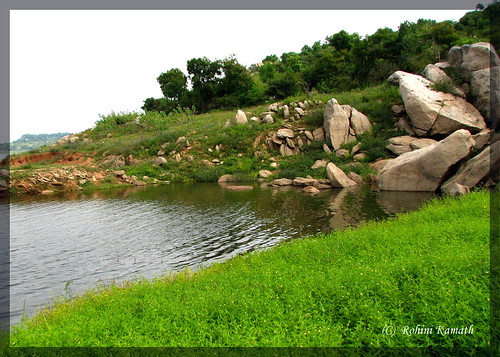
Having heard and read so much about and after seeing the excellent photos that Manchinbele seemed to yield. I decided that I must see this place for myself.
Fortunately, Keshav was ahead of me on this. He visited it with friends, scouted out the location of the weaver birds nesting area and photographed a Red Munia (Avadavat). Obviously, having seen his photos, wild horses could not have stopped me from going there myself.
Birds can be sighted all along the road. Almost immediately we saw an Indian Roller and Indian Robin (Male). It is difficult to stop to take photos since the narrow road is frequented by huge recklessly driven trucks and BMTC buses.
It took quite a while to reach the dam, the road at first is carpeted with potholes and finally deteriorates to only potholes, with a bit of road in between.
The dam is quite lovely to see, with bluer skies, it would have made a more picturesque site. The terrain is dry with thorny shrubs and grasses and quite a few wildflowers were in bloom.
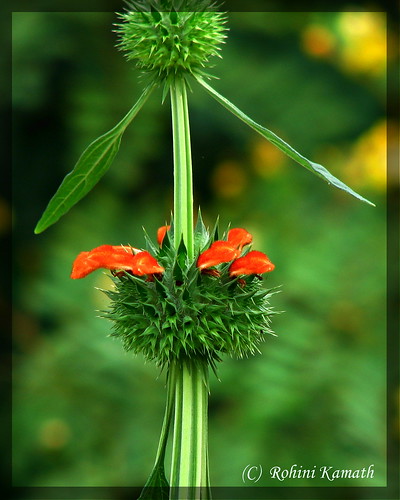 | 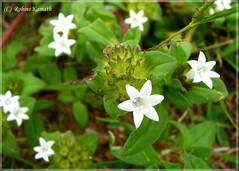 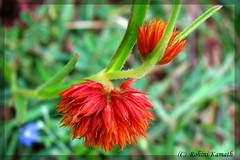 |
Our first stop was the lake. A Pariah Kite was kind enough to pose for over 20 min at ground level. Also saw a Pied Kingfisher for the first time, it disappeared as quickly as it had appeared. A Red wattled lapwing also was cooperative. There were also a large number of Large Pied wagtails.
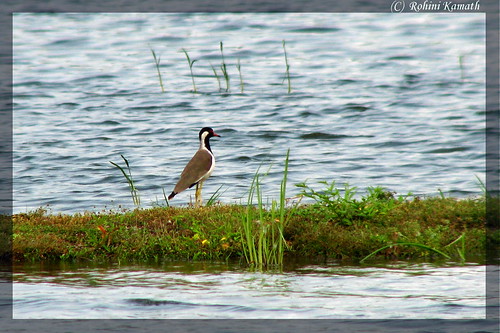
Red Wattled Lapwing

Pariah Kite
There is a rocky out crop near the lake on the side of the road. We parked there; the rocks harbour a number of lizards and rock agama. Click on the picture to view a bigger size.
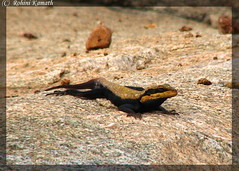 Rock Agama |  Id help pls. |
A large number of sunbirds can be found here, as fearless, as they are small. This was my first sighting of a purple sunbird male in Eclipse (non breeding) plumage.
Observe the stripe down the front of the neck.
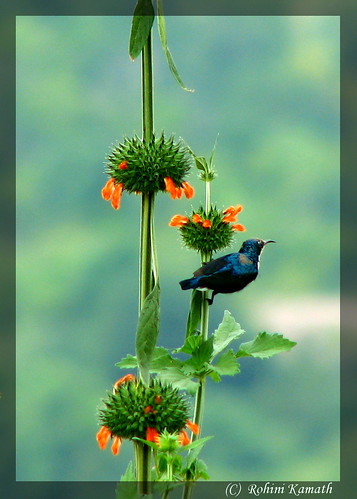 | 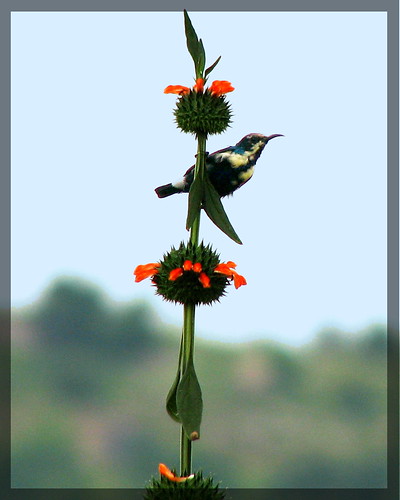 |
Our second stop was the weaver colony, further along the road to our right. The gregarious birds were busy in nest construction and constantly fought among themselves. They were oblivious to our presence. Sadly we didnt see the Red Munia again. Perhaps a question of timing.
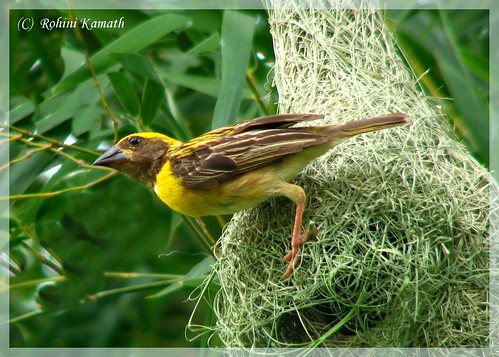
Male at Nest.
There were a large number of butterflies all around, and one particular plant near the weaver colony had a great many red black bugs - one in each flower.
 Plain Tigers in conference | 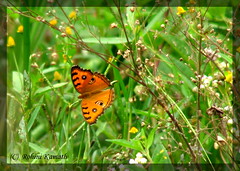 Peacock Pansy |
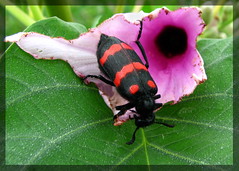 ID help pls | 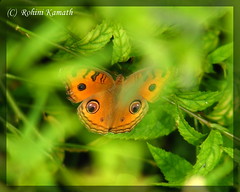 Peacock Pansy Peeking |
On the drive back, we saw several bee eaters, bush chats, plain prinias and one Barn swallow ( sitting on the road). Also saw a little brown dove and a Brahmini Kite.
Getting there:
We had set out on the road to mysore, on a mildly overcast day at 5:45am and quickly reached Kengeri. There after, we took the road to the Great Banyan Tree. Many confusing (for me) turns later we could see the dam. There after, there is just one very bad road.
Things to remember:
1. Fill fuel enough for a round trip. Not too many petrol pumps along the way
You'll need A/C on for the drive back
2. Take water and stuff to eat ( dont litter pls )
Small Shops can be found at the Great Banyan tree but nothing beyond that.
3. Its very sunny there and there is no shade. Take sunglasses, hat, sunscreen
4. If you cant read kannada make sure you know the way, else you may get lost
5. Go in a group if you plan to stay there for later in the day.
Place didnt look too safe to me
6. Take spare batteries and memory cards, photo opportunities are many.
I needed 2 cards.
7. There is NO MOBILE NETWORK beyond the dam.
8. Go very early. The distances may be short but unless you're in a four wheel drive, you'll be taking a long time to get there.






18 comments:
Lovely photos! Especially the kite; it is truly majestic. So are the directions! :P it cannot be bettered, but here is a meek effort to help the souls who want to reach the place:
Route(from M.G road): M.G Road->Hudson Circle->Mysore Road Flyover->Mysore Road till Kingeri-> Take a right immediately after Rajrajeshwari Dental College( It is on your right hand side exactly 2.2 kms after Rajrajeshwari Medical College)->after about 2 kms on the side road there is a small but distinguishable Y: Take Left-> Continue for another km past the Great Banyan Tree( Wonder what is great about it)-> After around 7-10 kms you will get to see the lake.
Thank you Keshav, I feared my directions may have sent any nature-lovers to their doom.
Lovely pics, the baya weaver especially is excellent.
Rohini, nice pictures with lot of useful information. Thanks for the effort in guiding the route to Manchinabele.
@Keshav- for your information Banyan tree on the way is locally called as "Dodda Aalada Mara" in Kannada meaning Big Banyan Tree and there is nothing great about it as it is just 400 years old and the tree with its vertical root system is said to be the biggest tree in Karnataka.
nice account and very nice pictures! i plan to drive up this weekend too :)
just a suggestion, since you ve (c) ed your photos, you can also protect them by removing the link which takes you to flickr. not many people think twice before reusing (c) ed stuff
good luck
-sneha
Awesome photos. Recently I have been there but did not saw much birds. Check my post at - http://www.travelingbeats.com/blog/trip-manchanabele-dam-backwaters
@Sneha: Thanks for your kind comments and the suggestion. I doubt though that my pictures are good enough to be copied. :)
@Jeet: Thanks for visiting, and quite a nice blog you have! Manchinbele is a place which never disappoints in terms of birds. Do be sure to get there at sunrise, and I'm sure you'll see lots of birds.
Hi,
Awsome photos... had been there last week, its a good place to be with friends.
Thank you so much for such a detailed report on your trip. My friend and i used this to visit Manchinbele yesterday and we had a fantastic trip. You have an excellent blog and your snaps are amazing as well.
Thank you once again for blogging and giving us such good informtion.
@GT: thanks for visiting, glad you found the info useful! The road @ Manchinbele has improved since the Chandrayan mission. Thank heavens.
Yep road is not that bad ... some parts of it is still kacha...but managable.
I also missed an 's' in listing my web site, the correct url is:
http://www.FleetingMoments.net .... you can check out the 20+ species of birds that we were able to photograph on that day
hi rohini ,
Kindly check my blog http://eternalwanderingsoul.wordpress.com/ , on my experiences when i visited the place yesterday
Mylabris pustulata
a beetle belonging to Cantharidae
often called as blister beetles.
Excellent photography :)
our manchinbele trip :D
http://theloapers.blogspot.com/2010/09/16-manchinbele-big-banyan-tree-reunion.html
Lovely Pictures!!!! Which camera did u use?
Lovely pics!!! Which camera do u use?
@Anjali: Thanks for your compliments.. These photos were taken a while ago while I was using a Canon S3, with a attachment lens.
great pics and information.
Post a Comment
Please do not post ADs here, they will not be published. All comments are moderated.